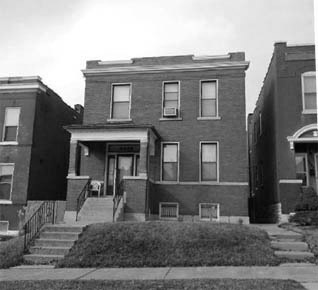“Are there still many foreclosures?” a financial advisor asked me at an impact investing event this April in San Francisco. I was there trying to spread the word about investing in American Homeowner Preservation to help families at risk of foreclosure stay in their homes. The question left me dumbfounded and I was tempted to respond with “What country are you living in?” The question stuck in my head and I have since awoken to the fact that, after two years of ever-rosier headlines about America’s “housing recovery,” many well-to-do Americans believe that the housing crisis is on the wane. No longer are masses of their friends, relatives and neighbors losing their homes to foreclosure, short selling to save face or struggling with their banks in often futile efforts to modify their loans. For the financial advisor in San Francisco, where home values appreciated 23.9 percent in 2013, I better understand his perspective.

The housing crisis is now concentrated in many of America’s more modest communities, where payday lenders, “no credit needed” used car dealers and Rent-A-Centers dot the main thoroughfares. The need is great: there are more than 4.4 Million families who are delinquent on their mortgages, and almost 10 Million who are severely underwater, owing at least 25 percent more than their homes are worth. A Haas Institute for a Fair and Inclusive Society report revealed that 34 percent of the 100 cities hardest hit by the housing crisis have median household incomes below $40,000. Additionally, the burden is being disproportionately borne by families of color: in 64 percent of the hardest-hit zip codes, African Americans and Latinos accounted for at least half of the population and, in 146 of the 395 hardest-hit zip codes, African Americans and Latinos account for at least 75 percent of the population. In contrast, the U.S. population per the 2010 census is 72.4 percent White, 16.4 percent Latino and 12.6 percent African American.
Homeownership represents 92 percent of African Americans’ wealth, compared to 67 percent for Latinos and 58 percent for Whites. Between 2005 and 2009, the household wealth of African Americans declined by 52 percent, Latinos plummeted by 66 percent and Whites dipped by 16 percent. Today, 15 percent of Whites are underwater, whereas African Americans are 86 percent more likely to be underwater than Whites and Latinos 36 percent more likely. Take away a minority family’s home and there is often little left: the median liquid wealth is $200 for African Americans and $340 for Latinos, compared to $23,000 for Whites. The mass taking of minority families’ homes is a contagion scourging this country. “Beyond Broke”, a report prepared by the Center for Global Policy Solutions, observed that “the subprime mortgage crisis had a direct role in decimating wealth in communities of color” and concluded that the widening income and wealth disparities will impact everyone in this country: “Who will purchase goods and services from businesses, drive new business ideas and keep our democratic engines running if the majority of the population is steeped in poverty?”
Sadly, all of this should come as no surprise. A decade ago, big banks would routinely steer borrowers — disproportionately minorities — who qualified for conventional loans to immensely more profitable subprime mortgages, which carried terms that set up borrowers to fail. Wells Fargo’s loan agents allegedly even joked about peddling“ghetto loans” to “mud people,” spewing racial slurs which make Donald Sterling’s recent remarks look tame in comparison. Wells Fargo’s CEO was “grilled” by Congress, yet the bank has largely gone unpunished and went on to become the most profitable bank in the U.S. However, take a drive through any hard-hit community and witness the aftermath: scores of vacant, boarded up homes which once represented the American Dream now look like Wells Fargo’s discarded trash. Wall Street bankers have gobbled up entire communities like Happy Meals, slurped up modest family wealth as if it were soda through a straw, tossed families out of their homes like unwanted packets of ketchup and littered streets with empty homes as if they were used-up fast food containers.
“Yes, there are still a lot of families in foreclosure,” is how I answered that financial advisor in San Francisco. This was all I could conjure up at the moment. However, I have reenacted the moment in my mind, wishing I had offered a more potent response. This is what I should have said: ‘Yes, there are still a lot of families in foreclosure. The housing market has improved over the last two years, but much of the improvement has been concentrated in middle and high income neighborhoods. In many low and moderate income communities, a third to a half of the families are still neck-deep in a housing crisis 7-years old with no end in sight. These millions of families of modest means with no financial safety net are where we can have the greatest impact.’ No homeowner should be left behind.
Originally posted on Huffington Post Blog by Jorge Newbery http://www.huffingtonpost.com/jorge-newbery/whites-recover-from-housi_b_5480437.html

 440 S LaSalle Street, Suite 1110, Chicago,IL 60605
440 S LaSalle Street, Suite 1110, Chicago,IL 60605




